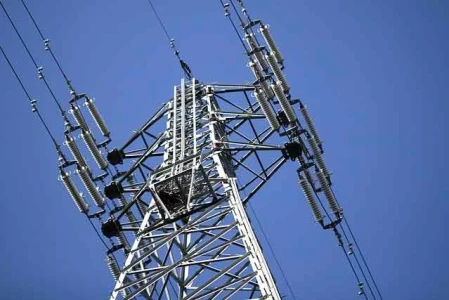Eversource Exits Offshore Wind Projects: GIP Steps In

In a significant shift within the offshore wind sector, Eversource Energy has announced its exit from offshore wind projects, paving the way for Global Infrastructure Partners (GIP) to acquire a stake in two key Northeastern projects. This transition marks a notable moment in the evolving landscape of renewable energy in the United States, highlighting the growing importance of private investment in offshore wind development.
Eversource's Decision to Exit
Eversource, a major utility company in the Northeast, has been actively involved in offshore wind initiatives. However, the company recently decided to divest its interests in these projects, citing a strategic shift in focus towards other energy sectors. This decision may come as a surprise to many, given Eversource's previous commitment to renewable energy and its role in advancing offshore wind initiatives in the region.
Eversource's exit is influenced by a combination of market dynamics, regulatory challenges, and the evolving competitive landscape in the renewable energy sector. As the industry matures, companies are reassessing their portfolios and determining where to allocate resources for optimal growth. Eversource’s move underscores the complexities involved in large-scale renewable projects, particularly in offshore wind, which requires significant capital investment and long-term commitment.
GIP's Acquisition of Northeastern Projects
Following Eversource's exit, GIP has stepped in to acquire stakes in two prominent offshore wind projects located in the Northeastern United States. This acquisition signifies GIP’s growing interest in the renewable energy sector, particularly in offshore wind, which is poised for significant expansion in the coming years.
GIP is known for its focus on investing in infrastructure projects that deliver stable cash flows. By acquiring stakes in these offshore wind projects, GIP aims to capitalize on the increasing demand for clean energy solutions, particularly as states in the Northeast ramp up their commitments to reduce greenhouse gas emissions. The acquisition aligns with GIP’s strategy to build a diverse portfolio that includes sustainable energy sources, providing both financial returns and environmental benefits.
Implications for the Offshore Wind Market
The transition from Eversource to GIP in these offshore wind projects raises several important implications for the broader market. First, GIP’s involvement may bring in a new approach to project financing and management, potentially leading to enhanced efficiencies and innovations in the development process. GIP's experience in infrastructure investments may provide a fresh perspective on optimizing the operations and performance of these wind farms.
Second, GIP’s acquisition underscores the increasing role of private equity and infrastructure funds in financing renewable energy projects. As traditional utilities reevaluate their roles in the energy transition, private investors are stepping in to fill the gaps. This trend is essential for scaling up renewable energy deployment, particularly in capital-intensive sectors like offshore wind.
The Future of Offshore Wind in the Northeast
The exit of Eversource and the entrance of GIP highlight the dynamic nature of the offshore wind industry in the Northeast. States in the region, including Massachusetts, New York, and New Jersey, have set ambitious targets for offshore wind capacity, aiming to harness the abundant wind resources off their coasts. These commitments present a significant opportunity for investment and development, attracting both established players and new entrants to the market.
As the region moves forward with its offshore wind initiatives, stakeholders will need to address key challenges, including regulatory hurdles, supply chain constraints, and the need for infrastructure development. Collaborative efforts among state governments, private investors, and utility companies will be crucial in overcoming these obstacles and ensuring the successful deployment of offshore wind projects.
Conclusion
Eversource’s exit from offshore wind projects and GIP’s acquisition of stakes in Northeastern initiatives represent a pivotal moment in the renewable energy landscape. As traditional utilities reassess their roles, private equity firms like GIP are increasingly stepping in to drive innovation and investment in sustainable energy solutions.
The future of offshore wind in the Northeast appears promising, with significant state commitments to expand capacity and reduce emissions. However, realizing this potential will require concerted efforts from all stakeholders to navigate the challenges ahead. As the industry evolves, the transition from traditional utility models to a more diversified investment landscape will be crucial in achieving ambitious clean energy goals.









